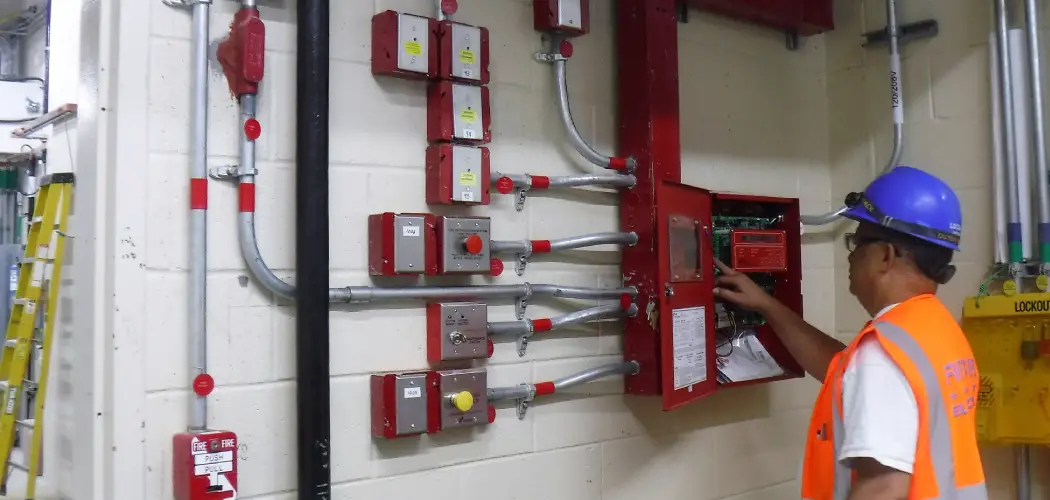A fire alarm system is a crucial safety measure that every building needs to have. It’s designed to detect and warn people about the presence of smoke, fire, or other emergencies. In this guide, we’ll discuss how to design fire alarm system.
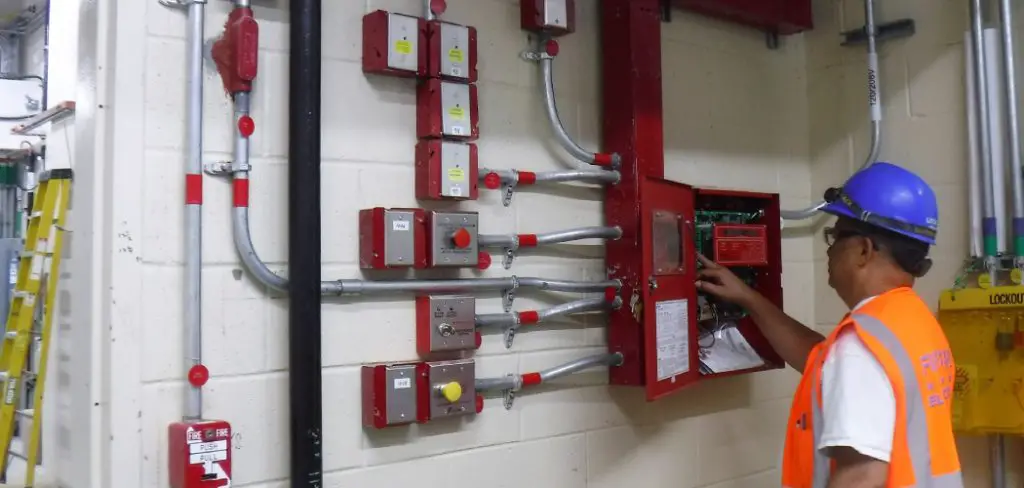
Necessary Items for a Fire Alarm System
Before diving into the design process, it’s essential to understand the necessary components of a fire alarm system. These items include:
- Smoke Detectors: These devices detect smoke particles and trigger the alarm.
- Heat Detectors: They sense high temperatures and activate the alarm.
- Pull Stations: In case of an emergency, people can manually pull these to activate the alarm.
- Notification Devices: These devices, such as sirens or strobe lights, alert people in the building about a potential fire.
- Control Panel: It’s the brain of the system that receives signals from various detectors and activates notification devices.
12 Steps on How to Design Fire Alarm System
Step 1: Identify Fire Hazards
The first step in designing a fire alarm system is to identify potential fire hazards in the building. This includes flammable materials, sources of heat, and rooms where fires are most likely to start. As a designer, it’s essential to understand the building’s layout and potential risks to determine the type and placement of detectors.
Step 2: Understand Local Fire Codes
Before designing a fire alarm system, you must familiarize yourself with local fire codes and regulations. These codes vary by state and municipality, so it’s crucial to stay up-to-date on any changes or updates.
Step 3: Determine the Type of System
Based on the building’s size, layout, and potential fire hazards, you’ll need to determine the type of fire alarm system required. There are two main types: Conventional and Addressable. A conventional system is more suitable for smaller buildings, while an addressable system is better for larger buildings as it can pinpoint the exact location of a fire.
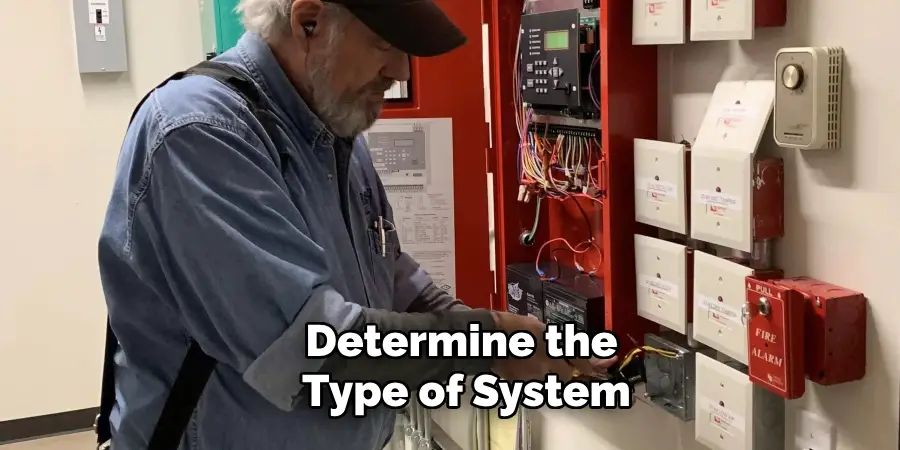
Step 4: Consider Detector Placement
To maximize the effectiveness of a fire alarm system, detectors must be placed strategically. Smoke and heat detectors should be installed in every room and hallway, with additional ones in high-risk areas such as kitchens or boiler rooms.
Step 5: Choose Notification Devices
The type of notification devices used depends on the building’s occupants and layout. For example, a louder siren may be necessary for large open spaces, while flashing lights are more effective in areas with hearing-impaired individuals.
Step 6: Determine the Power Source
Fire alarm systems require a reliable power source to ensure they function correctly during an emergency. This can be through hardwired electricity or backup batteries, depending on the building’s needs and fire codes.
Step 7: Consider Fire Alarm Monitoring
Fire alarm monitoring is a critical aspect of any system. It allows for remote monitoring of the system, quick notification to emergency services, and can even detect faults or malfunctions in the system.
Step 8: Design an Evacuation Plan
As part of the fire alarm system design process, it’s essential to create an evacuation plan for occupants in case of a fire. This plan should include designated exit routes, meeting points, and any special instructions for individuals with disabilities.
Step 9: Incorporate Fire Extinguishers
While a fire alarm system can alert people about a potential fire, having fire extinguishers readily available can help contain and suppress small fires. It’s crucial to consider the placement and type of extinguishers when designing a system.
Step 10: Plan for Maintenance and Testing
Regular maintenance and testing are necessary to ensure a fire alarm system is functioning correctly. As a designer, it’s essential to plan for easy access to detectors, notification devices, and control panels for routine inspections.
Step 11: Train Occupants
Designing a fire alarm system is only effective if the building’s occupants know how to respond in case of an emergency. As part of the design process, it’s essential to develop training materials and conduct drills to ensure everyone knows what to do.
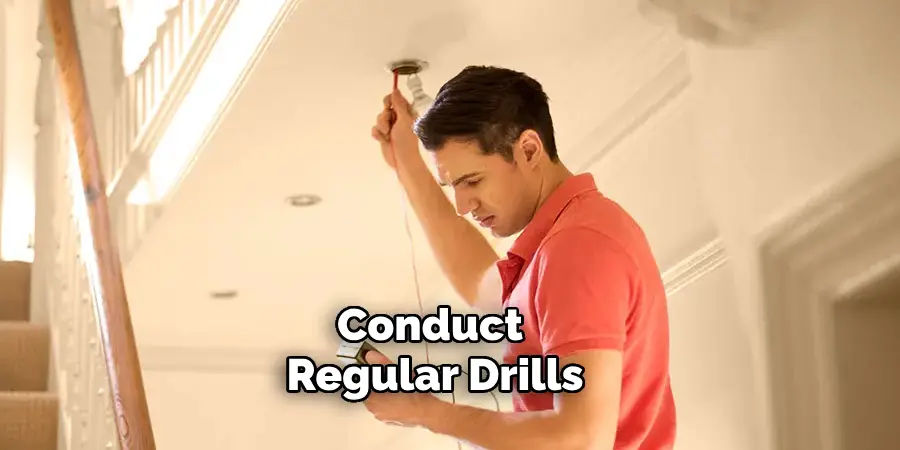
Step 12: Get Professional Assistance
While it may be possible to design a basic fire alarm system, it’s always best to get professional assistance. Fire alarm system designers have experience and knowledge of local codes and regulations and can ensure the system is effective and up to standards.
Designing a fire alarm system requires careful planning and consideration of various factors, including building layout, potential hazards, and fire codes. By following these 12 steps, you can create an effective and reliable fire alarm system that helps protect people and property in case of an emergency. Remember to always stay up-to-date on regulations and seek professional assistance when needed to ensure the system’s effectiveness.
9 Safety Measures for Fire Alarm Systems
Along with proper design and installation, it’s crucial to take safety measures to ensure a fire alarm system is effective in case of an emergency. These measures include:
1) Regular Maintenance and Testing
As mentioned in step 10, regular maintenance and testing are essential to ensure the system is functioning correctly. This includes checking detectors, notification devices, and control panels for any faults or malfunctions.
2) Keep Detectors Clean
Dirt, dust, and other debris can affect the performance of a smoke or heat detector. It’s crucial to keep them clean and free from any obstructions to ensure they can detect a fire accurately.
3) Train Occupants
Proper training and education on how to respond in case of a fire are crucial for the system’s effectiveness. This includes knowing evacuation routes and designated meeting points, as well as how to use fire extinguishers if available.
4) Regularly Replace Batteries
If the fire alarm system relies on backup batteries, it’s crucial to replace them regularly to ensure they have enough power in case of a power outage or failure. While some systems may have a low battery indicator, it’s best to replace them at scheduled intervals.
5) Monitor for False Alarms
False alarms can be costly and disruptive. It’s crucial to monitor the system for any potential causes of false alarms, such as cooking smoke or dust, and address them promptly. Keep a log of false alarms to identify any patterns or recurring issues.
6) Proper Placement of Detectors
As discussed in Step 4, detectors must be placed strategically for maximum effectiveness. It’s crucial to avoid placing them near air vents, windows, or other potential sources of airflow that can affect their performance.
7) Regularly Inspect Wiring and Connections
Faulty wiring or loose connections can affect the system’s performance and lead to false alarms. It’s essential to inspect all wiring and connections regularly and address any issues promptly. Like with batteries, keep a log of any repairs or replacements.
8) Install a Secondary Power Source
In case of a power outage or failure, having a secondary power source can ensure the system continues to function. This could be through backup batteries or connecting to an emergency generator.

9) Keep Emergency Contact Information Updated
As part of the fire alarm system design process, it’s essential to have a list of emergency contacts readily available. This includes the fire department, building management, and any other relevant authorities. It’s crucial to keep this information updated in case of any changes.
By following these safety measures on how to design fire alarm system, you can ensure your fire alarm system is reliable and effective in case of an emergency. Remember to stay up-to-date on regulations and seek professional assistance when needed to ensure the system’s effectiveness. Overall, proper design, installation, and maintenance are crucial for a fire alarm system’s effectiveness in protecting people and property from potential fires.
8 Things to Avoid When Designing a Fire Alarm System
While there are several essential steps to follow when designing a fire alarm system, it’s also crucial to avoid certain mistakes. Here are eight things you should avoid when designing a fire alarm system:
1) Lack of Proper Planning
Designing a fire alarm system without proper planning and consideration of all necessary factors can lead to an ineffective system. Make sure to thoroughly assess the building’s layout and potential hazards before designing the system.
2) Ignoring Local Codes and Regulations
Each state and locality may have specific codes and regulations for fire alarm systems. It’s essential to be aware of these and ensure the design complies with them. Even if the system is effective, non-compliance can result in fines and penalties.
3) Inadequate Coverage
Ensuring proper coverage of all areas in a building is crucial for a fire alarm system’s effectiveness. Avoid leaving any blind spots or areas with inadequate detection and notification. Like with planning, careful assessment of the building’s layout is necessary to determine adequate coverage.
4) Improper Detector Placement
As discussed in step 6, the strategic placement of detectors is crucial for their effectiveness. Avoid placing them near potential sources of airflow or areas where they may be obstructed by objects such as curtains or furniture.
5) Poor Quality Equipment
Choosing high-quality equipment is essential for a fire alarm system’s reliability and effectiveness. Avoid cutting corners or using subpar equipment to save money, as it can lead to malfunctions and false alarms.

6) Inadequate Maintenance and Testing
As emphasized throughout the steps, regular maintenance and testing are crucial for a fire alarm system’s effectiveness. Avoid neglecting this aspect, as it can result in malfunctioning equipment and false alarms.
7) Not Considering Occupant Needs
When designing a fire alarm system, it’s essential to consider the building’s occupants and their specific needs. This includes people with disabilities or special requirements for notification, such as visual or audible impairments.
8) Failure to Train Occupants
Proper training and education for building occupants on how to respond in case of a fire are crucial for the system’s effectiveness. Avoid ignoring this aspect, as it can lead to confusion and chaos in an emergency situation.
By avoiding these mistakes and following the necessary steps outlined above, you can ensure a well-designed and effective fire alarm system that will provide reliable protection in case of a fire. Remember to regularly review and update the system as needed to maintain its effectiveness over time. Overall, proper planning, compliance with regulations, and maintenance are crucial for a successful fire alarm system design.
8 Additional Tips for Maintaining a Fire Alarm System
In addition to regular maintenance and testing, here are eight additional tips for maintaining a fire alarm system:
1) Keep Records of Inspections and Tests
Keeping detailed records of all inspections and tests can help identify any recurring issues or potential problems. This information is also useful in case of any insurance claims or legal disputes. Make sure to document the date, time, and results of each inspection or test.
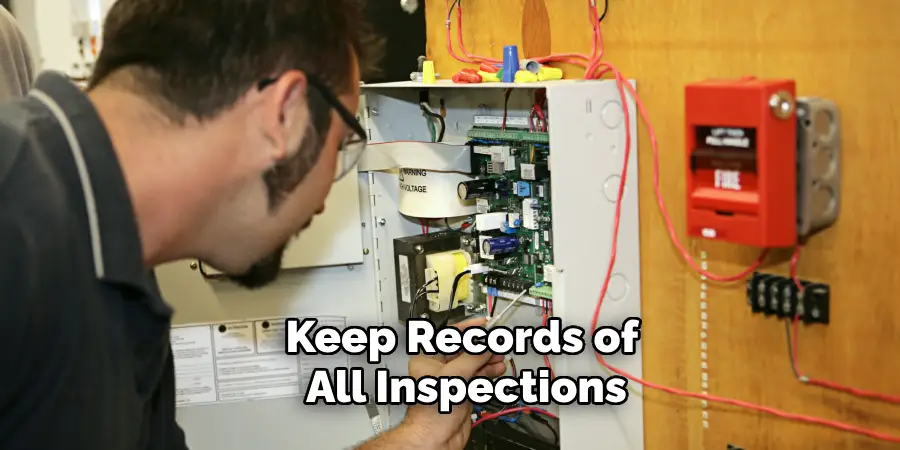
2) Check for Dust and Debris
Dust and debris can accumulate on detectors and affect their performance. Regularly inspect and clean all detectors to prevent false alarms or malfunctions. However, make sure to follow the manufacturer’s instructions for cleaning and avoid damaging the equipment.
3) Monitor Battery Levels
As discussed in step 6, keeping track of battery levels is crucial for a fire alarm system’s reliability. Make sure to regularly check and replace batteries as needed. This is especially important for systems that rely on backup batteries during power outages.
4) Test Alarm Signal Transmission
If your fire alarm system is connected to a monitoring service or emergency response team, make sure to test the signal transmission regularly. This will ensure that the appropriate authorities are notified in case of an actual emergency.
5) Inspect Wiring and Connections
Faulty wiring or connections can affect a fire alarm system’s effectiveness. Regularly inspect these components and repair or replace any damaged or malfunctioning parts. For complex systems, it may be best to seek professional assistance for inspections and repairs.
6) Train New Occupants
Whenever new occupants move into a building, make sure to provide them with proper training on the fire alarm system’s operation and evacuation procedures. This will ensure that everyone is prepared in case of an emergency.
7) Stay Up-to-Date on Regulations and Standards
Fire alarm system regulations and standards are constantly evolving, so it’s crucial to stay up-to-date on any changes. This will ensure that the system remains compliant and effective. Attend conferences or workshops and consult with professionals to stay informed.
8) Conduct Regular Drills
In addition to training occupants, conducting regular fire drills is essential for ensuring everyone knows what to do in case of a fire. This will also help identify any potential issues with the system or evacuation procedures that need to be addressed. Remember, preparedness is key in minimizing the risk and damage of a fire. By following these tips on how to design fire alarm system and avoiding common mistakes, you can maintain an efficient and reliable fire alarm system for your building. Stay vigilant and always prioritize safety when it comes to fire prevention.

Frequently Asked Questions
How Often Should a Fire Alarm System Be Tested?
Fire alarm systems should be tested at least once a year, but it’s recommended to do so more frequently (quarterly or semi-annually) for optimal maintenance and reliability.
What Should Be Included in a Fire Alarm System Maintenance Log?
A fire alarm system maintenance log should include the date, time, and results of all inspections and tests performed on the system. It should also document any repairs or replacements made to components of the system.
Are There Specific Regulations for Fire Alarm Systems?
Yes, there are specific regulations and standards set by national and local authorities for fire alarm systems. It’s important to stay up-to-date on these regulations and ensure compliance when designing and maintaining a fire alarm system.
Can I Design and Install a Fire Alarm System Myself?
It is not recommended to design or install a fire alarm system yourself unless you have proper training and qualifications. It’s best to consult with professionals who are knowledgeable and experienced in fire alarm system design and installation. Always prioritize safety when it comes to fire prevention. If you are unsure about any aspect of designing or maintaining a fire alarm system, seek professional assistance. It’s crucial to have a properly designed and functioning fire alarm system for the safety of building occupants and property.
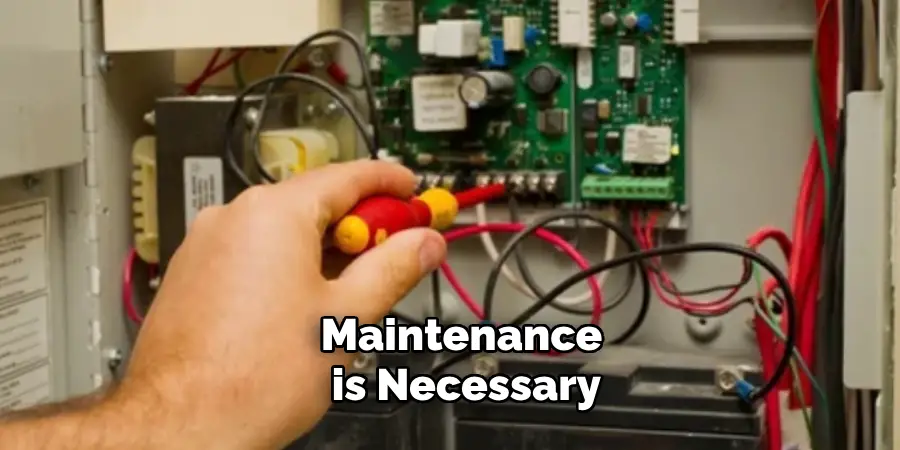
Conclusion
A well-designed and properly maintained fire alarm system is vital for the safety of building occupants and property. By avoiding common mistakes, following necessary steps, and implementing additional tips on how to design fire alarm system, you can ensure an effective and reliable fire alarm system. Regular maintenance, testing, and training are crucial for maintaining the system’s effectiveness over time.
Remember to always prioritize safety and stay up-to-date on regulations and standards. With proper planning, compliance, and diligent maintenance efforts, you can have peace of mind knowing that your building is protected from potential fire hazards.

